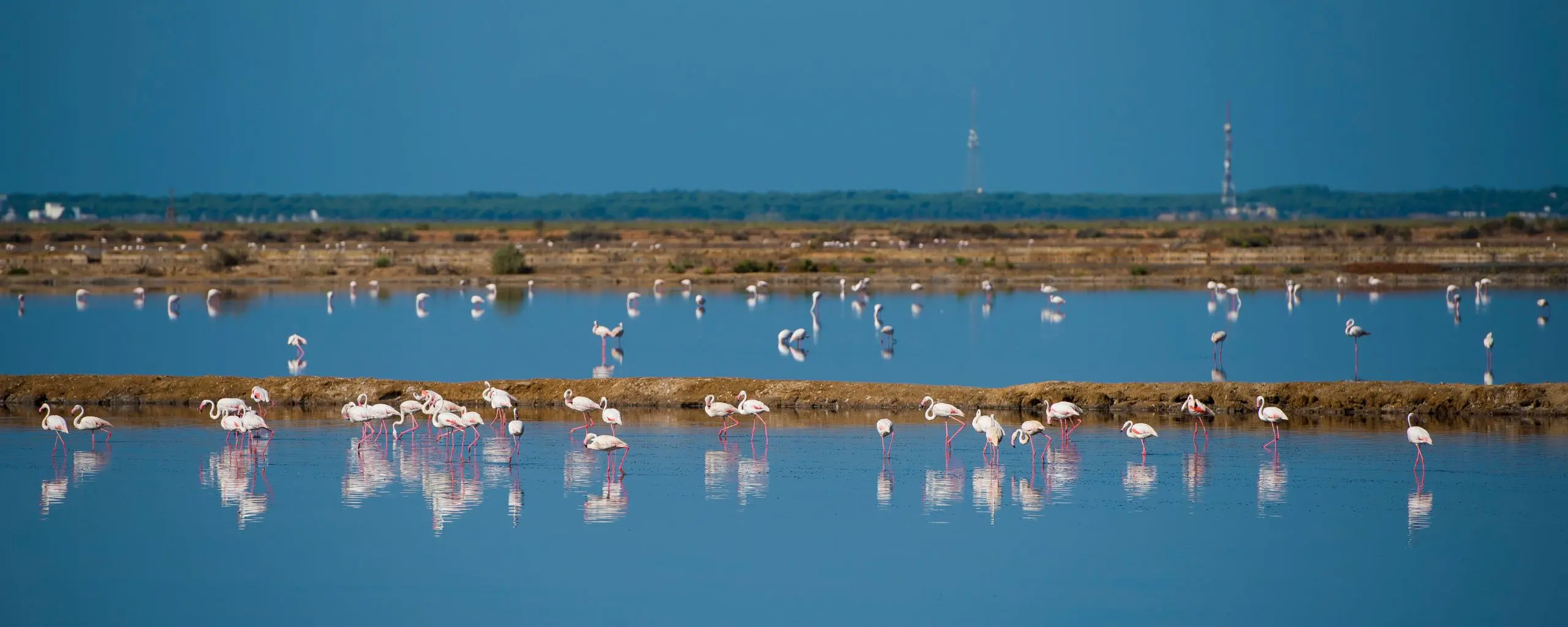Just a few minutes from the capital is the Marismas del Odiel Nature Reserve. Declared a Biosphere Reserve by UNESCO in 1983, it is one of the largest expanses of marshland in Spain, with a great diversity of animal and plant species.
The meeting of the sea with the mouths of the rivers Tinto and Odiel shapes the environment, creating spaces such as islands, beaches, lagoons and muddy ground. The oscillation of the tides causes some of these habitats to be alternately inundated or emerged.
Odiel marshland is a strategic enclave for birds on their migratory routes between Europe and Africa. More than 250 species, many of them endangered, can be seen in the area. Among the most representative are the flamingo, spoonbill, heron and osprey. In addition to birds, the area is home to one of the largest colonies of chameleons in southern Europe and even an endemic species of butterfly, only described in Marismas del Odiel.

The Anastasio Senra Visitor Centre, within the Natural Reserve, has exhibition rooms and offers information to tourists about this protected environment. In addition, the more than 7,000 hectares of the Natural Area are dotted with multiple itineraries, as well as viewpoints and bird observatories. Another attractive way of getting to know Marismas del Odiel is from the water, navigating through the network of canals that make up the marshes.
Odiel salt mashes take advantage of the natural evaporation of seawater for the production of salt.
Odiel salt mashes take advantage of the natural evaporation of seawater for the production of salt.
Shellfishing, beekeeping and fishing are other sustainable activities that man has traditionally carried out in territories that have seen the passage of numerous cultures. It is believed that the ancient city of Tartessos was settled in this area. From the Romans there are remains of fish salting ponds and, from the Muslims, an archaeological site on Saltés Island. It is an important city that was the capital of a Taifa kingdom in the 10th and 11th centuries.
Once considered unhealthy, salt marshes are ecosystems of great importance in the climatic balance. They nourish the land by retaining sediment and minimise the effects of floods and droughts, as they act as large sponges, storing rainwater in winter and releasing it in the drier seasons.